Wondering about the best wood glue for your project? A pro woodworker offers his top wood glues and when DIYers should use each.
Our editors and experts handpick every product we feature. We may earn a commission from your purchases.Learn more.
Wondering about the best wood glue for your project? A pro woodworker offers his top wood glues and when DIYers should use each.
Our editors and experts handpick every product we feature. We may earn a commission from your purchases.Learn more.
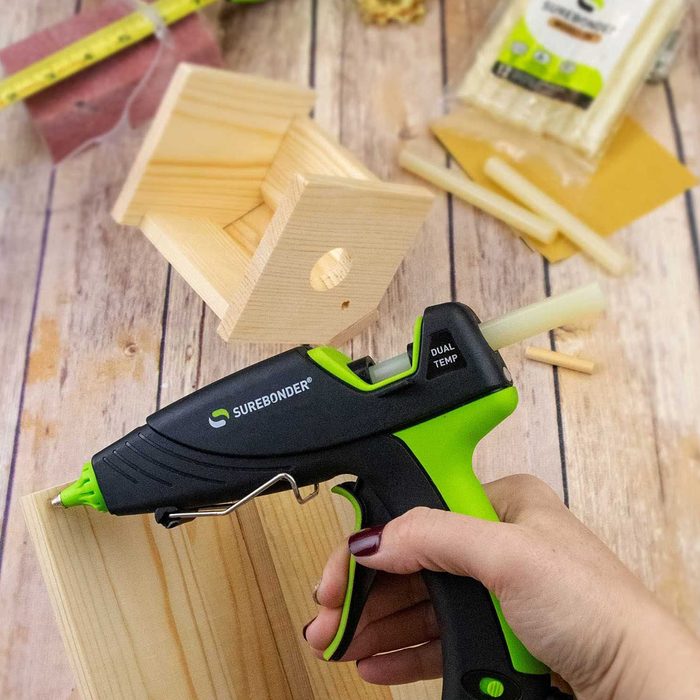
Wood glue is a vital part of the woodworking process. With it, you can join pieces together without nails, screws or other mechanical fasteners.
Just look down the glue aisle in your local hardware store, and you can find dozens of options. How do you choose the best type for your project? Consider these factors:
Over the years, these glues have proven to be my favorites:
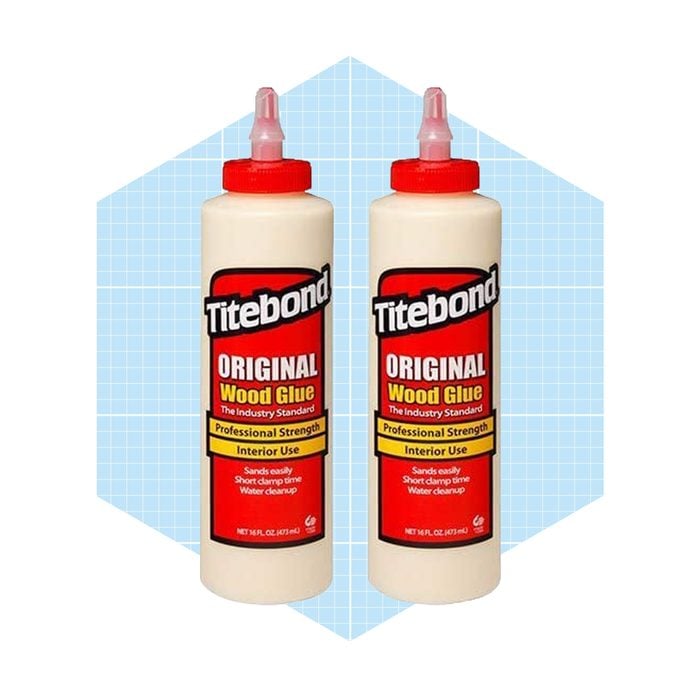
Hobbyists and professionals alike trust Titebond Original Wood Glue. Besides delivering a stronger bond than wood itself, it features excellent initial tack and quick setup to minimize clamping time. It’s easily sanded, unaffected by finishes, and once dry can be chipped off non-porous surfaces.
Titebond Original Wood Glue is suitable for hardboard, particleboard and most other porous materials. And best of all, it’s non-toxic and cleans up with water. It will ultimately wash out of your favorite work clothes if you get messy during clamp up.
Color: Yellow.
Open time: Four to six minutes.
Waterproof: No.
Wet cleanup: Water.
Pros
Cons
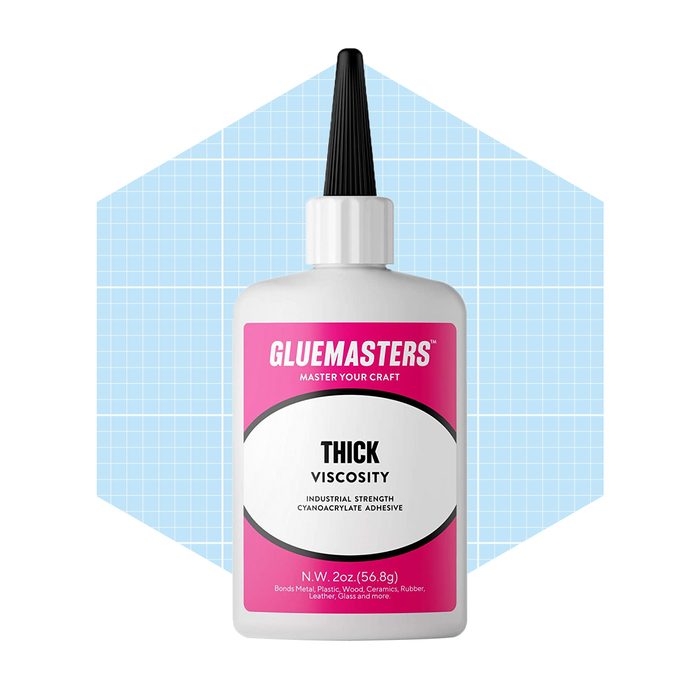
Super glue and CA glue are different names for the same adhesive — cyanoacrylate.
Although cyanoacrylate glues are not suitable for long-term wood adhesion, they do have a purpose in your wood shop. Cyanoacrylate glues are strong with a fast setting time, usually between ten and thirty seconds. That makes them ideal for repairing tools and building jigs along with fasteners.
There are many viscosities of cyanoacrylate glues. My preferred CA glue for quick jig building is Glue Masters Thick Viscosity because it won’t immediately soak into porous surfaces like medium density fiberboard (MDF).
Cons
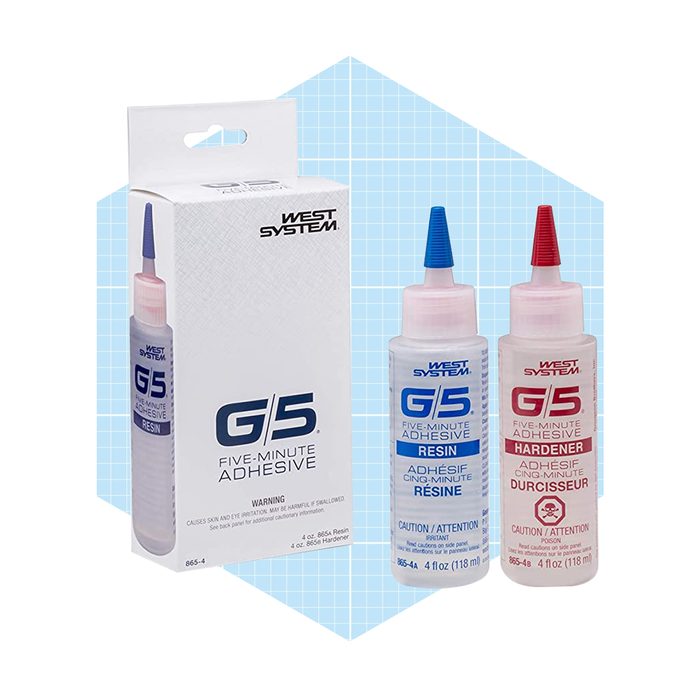
When I need a quick repair, I turn to a five-minute epoxy. West System’s G5 Five-Minute Epoxy is an easy-to-use two-part epoxy that cures in four hours.
West Systems G/5 Epoxy has the ideal viscosity. Stable enough to bridge small voids while thin enough to penetrate porous surfaces, G/5 Epoxy adheres to most surfaces. It can be thickened and take on color by adding sanding dust, powdered fillers or dyes to fill wider gaps in glue joints and create fast-setting sculpting putties.
Color: Clear-ish.
Open time: Three to five minutes.
Waterproof: Yes
Wet cleanup: Solvent like lacquer thinner, acetone or denatured alcohol.
Pros:
Cons
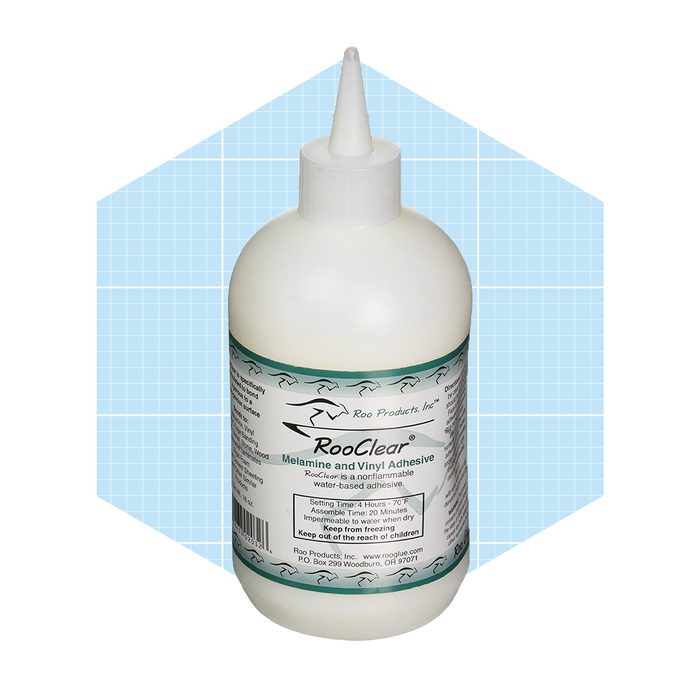
To build correctly from melamine, you need specialized tools. Melamine saw blades reduce chipping, and fasteners are specifically made to hold the melamine parts together.
Most of all, you need good melamine glue. Roo Glue Melamine and Vinyl Adhesive is the best. It bonds the particleboard interior and the plastic-coated resin exterior of the melamine.
Roo Glue is a clear-drying, water-based adhesive for porous and non-porous surfaces including wood products, melamine, vinyl, acrylic, PVC edgebanding, metal, stone and high-pressure laminate. Because it has some flexibility when dry, I use it along with staples whenever I need to wrap fabric or canvas for upholstery, art canvases or stage sets.
Color: Clear.
Open Time: Twenty minutes.
Waterproof: No.
Wet cleanup: Water.
Pros
Cons
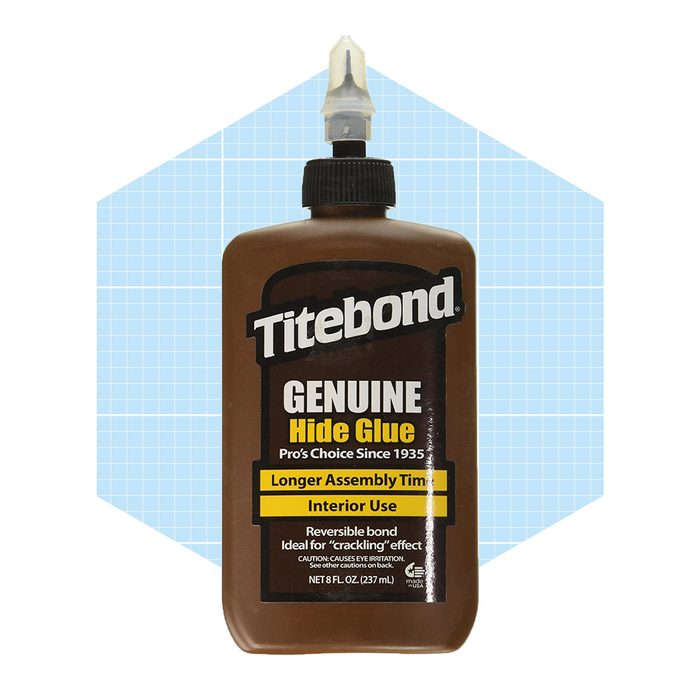
If you’re a luthier, a traditionalist woodworker, or maybe you just binge-watched some classic woodworking episodes on PBS, hide glue is the glue for you.
Of all the woodworking glues, hide glue is the oldest and most traditional. Hide glue sets itself apart because it’s easily reversible, easy to sand, essentially non-toxic and, best of all, transparent to most finishes. It doesn’t leave unsightly glue marks near seams.
Hide glue is sold premixed in liquid form, and in granular form to be mixed by the user. Granular hide glue is sold in gram strengths. The higher the gram strength, the tackier and stronger the glue and the less open time you have.
Brooklyn Tool & Craft sells the best granular hide glue, which I once mixed myself. Nowadays, my laziness and endless list of projects forced me to rely on premixed Titebond Hide Glue instead, without complaint.
Color: Amber.
Open time: Ten miuntes.
Waterproof: No
Wet cleanup: Water.
Pros
Cons
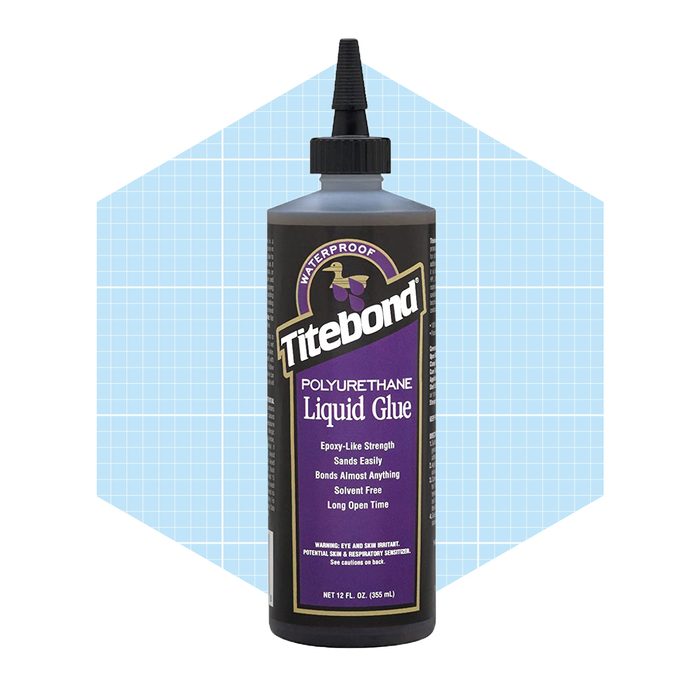
Titebond Polyurethane Glue combines long working time (30 minutes) with short clamp time (45 minutes). It can bond almost any two materials together. It’s also waterproof, unaffected by finishes and sandable.
Besides wood-to-wood adhesion, Titebond Polyurethane Glue can be applied to ceramics, high-pressure laminate, metals, most plastics, solid surfaces, stone and other porous/non-porous surfaces.
I keep a bottle on hand for whenever I have too much play in a joint. While polyurethane glue dries, its expanding nature fills the gap and stabilizes the joint. However, be sure to wet down the contact surfaces. Polyurethane glues cure through a chemical reaction that requires moisture.
Color: Brown.
Open Time: Twenty-five to 30 minutes
Waterproof: Yes.
Wet cleanup: Mineral spirits.
Pros
Cons
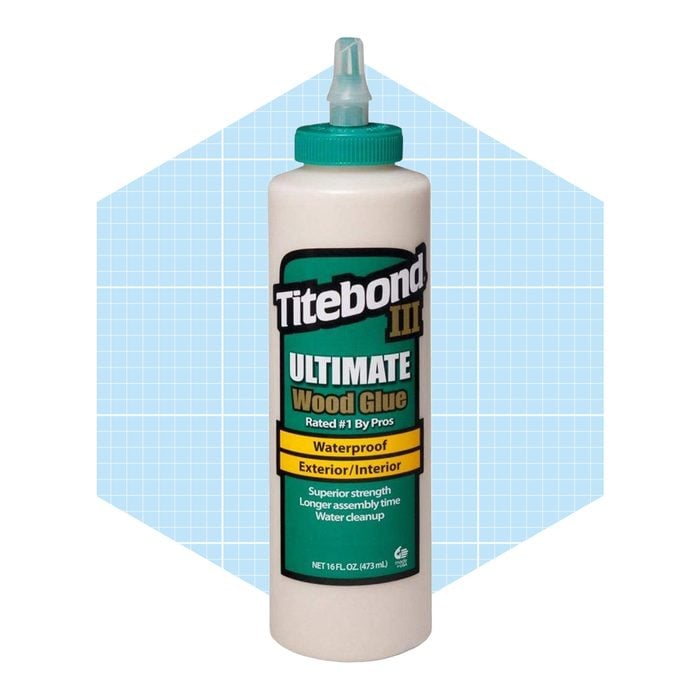
If I had to choose one glue to have in my shop, Titebond III Ultimate Wood Glue would be at the top of my list. Titebond III Ultimate Wood Glue is a one-part, waterproof wood glue that meets ANSI/HPVA Type 1 water specification standards.
While sharing the same initial tack and similar sanding ability as traditional Titebond products, this non-toxic, solvent-free glue offers superior bond strength and longer open times.
A versatile all-purpose glue, Titebond III Ultimate Wood Glue is ideal for interior and exterior applications. It’s FDA approved for direct food contact, so it’s the perfect glue for turned wood bowls, butcher block countertops and cutting boards. It’s as close to an all-encompassing wood glue as there is.
Color: Tan.
Open time: Eight to 10 minutes.
Waterproof: Yes
Wet cleanup: Water.
Pros
Cons
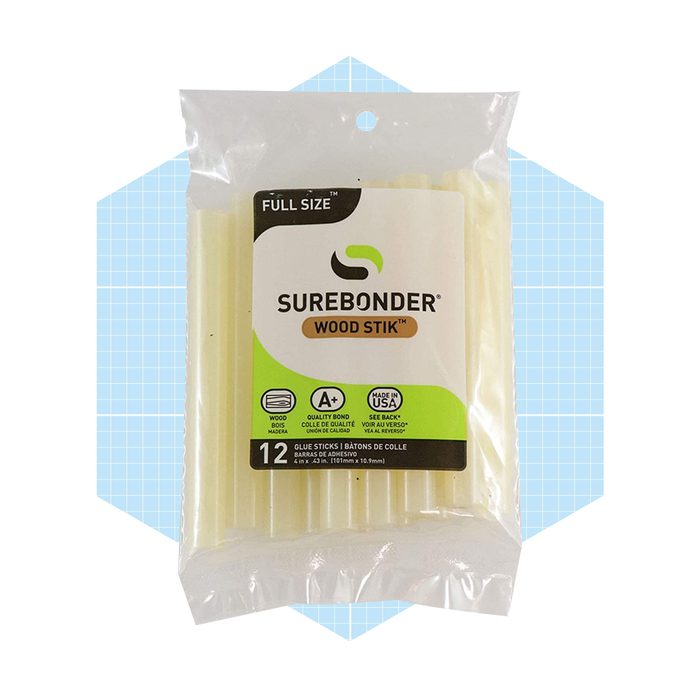
In recent years, I’ve become aware of the incredibly strong hot melt glues available. Surebonder Woodstik is by far my favorite.
It’s an extremely high bonding hot melt adhesive with a long open time. While formulated for wood, it’s also effective with metal, plastic and ceramic materials.
The manufacturer claims it can replace wood glue, but I’ve always used it in combination with other adhesives or fasteners to bend plywood for curve molds and reinforce rounded cabinets. This isn’t the same hot melt they use at the county crafts fair, I can assure you.
Color: Tan.
Open time: Fifteen seconds.
Waterproof: Yes.
Wet cleanup: Isopropyl alcohol for residue, hairdryer and putty knife for globs.
Pros
Cons
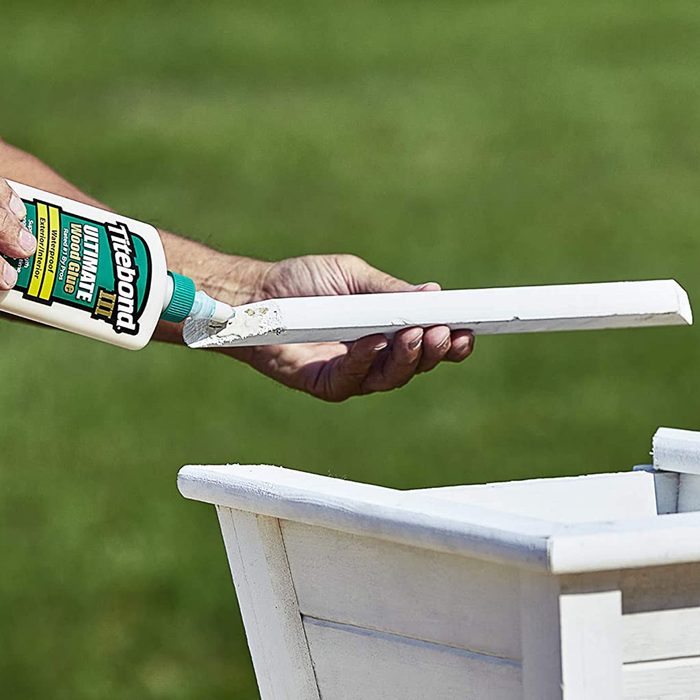
Chemistry and cure are the most significant factors that differentiate wood glues.
Common glues like Elmer’s craft glue, Titebond Original Wood Glue and Titebond III are all prepared by the polymerization of vinyl acetate, or PVAs. Hide glues are made from animal connective tissue, and polyurethane glues from, you guessed it, polyurethane.
PVA glues cure by evaporation or absorption of water into a substrate. Polyurethane glues cure by chemical reaction with moisture, and two-part epoxy glues cure by mixing hardener and resin together.
It’s often said that wood glues today are stronger than the wood they join.
A typical wood can withstand a force between 200 and 1,000 pounds per square inch (PSI), while most wood glues can withstand between 3,000- and 4,000-PSI when fully cured. As a result, most woods, including the world’s hardiest ones, fail not at the glue joints but rather where the wood itself fails.
Sand it carefully with sandpaper. You could also try a heat gun to warm the glue so you can scrape it with a putty knife, though this may allow certain types to penetrate deeper into the wood grain.